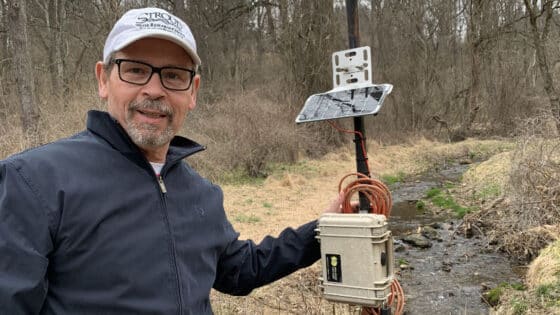Ward, J.V., K. Tockner, D.B. Arscott, C. Claret. 2002. Freshwater Biology 47: 517–539.
doi: 10.1046/j.1365-2427.2002.00893.x
Abstract
- This review is presented as a broad synthesis of riverine landscape diversity, beginning with an account of the variety of landscape elements contained within river corridors. Landscape dynamics within river corridors are then examined in the context of landscape evolution, ecological succession and turnover rates of landscape elements. This is followed by an overview of the role of connectivity and ends with a riverine landscape perspective of biodiversity.
- River corridors in the natural state are characterised by a diverse array of landscape elements, including surface waters (a gradient of lotic and lentic waterbodies), the fluvial stygoscape (alluvial aquifers), riparian systems (alluvial forests, marshes, meadows) and geomorphic features (bars and islands, ridges and swales, levees and terraces, fans and deltas, fringing floodplains, wood debris deposits and channel networks).
- Fluvial action (erosion, transport, deposition) is the predominant agent of landscape evolution and also constitutes the natural disturbance regime primarily responsible for sustaining a high level of landscape diversity in river corridors. Although individual landscape features may exhibit high turnover, largely as a function of the interactions between fluvial dynamics and successional phenomena, their relative abundance in the river corridor tends to remain constant over ecological time.
- Hydrological connectivity, the exchange of matter, energy and biota via the aqueous medium, plays a major though poorly understood role in sustaining riverine landscape diversity. Rigorous investigations of connectivity in diverse river systems should provide considerable insight into landscape-level functional processes.
- The species pool in riverine landscapes is derived from terrestrial and aquatic communities inhabiting diverse lotic, lentic, riparian and groundwater habitats arrayed across spatio-temporal gradients. Natural disturbance regimes are responsible for both expanding the resource gradient in riverine landscapes as well as for constraining competitive exclusion.
- Riverine landscapes provide an ideal setting for investigating how complex interactions between disturbance and productivity structure species diversity patterns.


